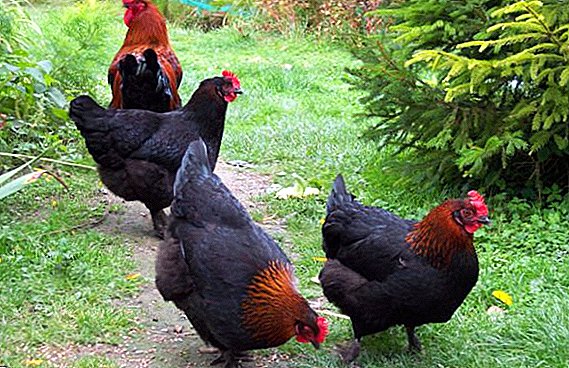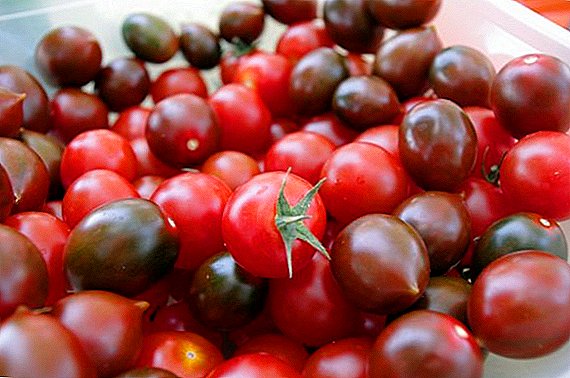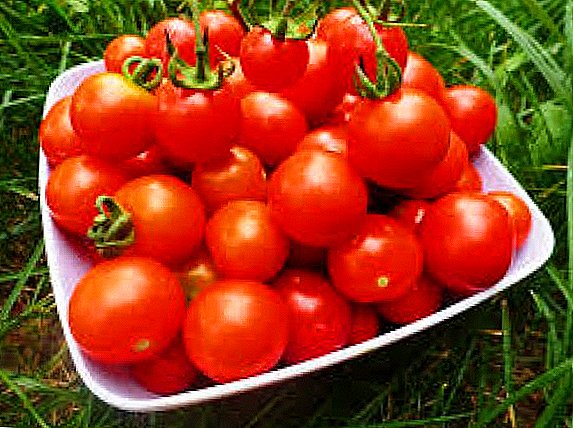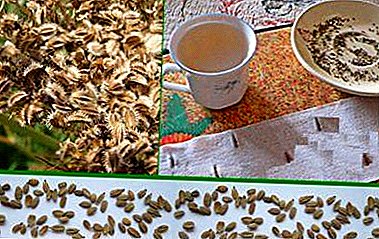
On the fertile chernozem, a variety of cereals and other crops, including corn, have long been cultivated.
Before being processed and become a full-fledged food product, corn goes a long way, which begins with the harvest, continues in the form of storage, and ends with the processing itself.
It is very important to minimize both the risk and the yield losses themselves in order to obtain the maximum yield of the finished product.
One of the key aspects in the use of, in principle, any culture, is the issue of storage. All the details of this process are described in this material.

There are several modes of storage of the corn crop - this is the storage of dry grain or the grain mass in a state of low temperature.
There are other ways, but these are the most common and well-known.
In addition to the regime itself, preliminary preparatory techniques are also used, for example, cleaning and drying the harvested crop. If the storage of corn implies its content in the form of grain, then first all the collected material is necessary primary clean, that is, remove from the general mound impurities of large sizes.
This is followed by drying of the grain on various types of devices, and the already dried grain should be cleaned on separators from small weeds and grain impurities. If the corn is stored on the cob, then it does not need to be cleaned, but only needs to be dried, and in a fixed layer on the ground, over which there is a shed.

As for technologies, dry storage is based on a critical level of humidity, that is, highly dried corn will not deteriorate and change throughout the entire storage period due to the extremely slow process of physiological changes against the background of lack of water in free form.
If the moisture content of the corn grain does not go beyond the range of 12-14%, and also in the absence of a sign of infection by various parasites, then the crop can be stored for several years in this form.
The principle of storing grain in refrigerated form is based on the extreme decrease in temperature, therefore all vital processes are greatly slowed down.
But in this form, corn can not be stored for a long time, since even in the most sterile conditions, the grain can quickly deteriorate due to hidden threats - all sorts of small pests.

Corn can be stored in different ways, that is, in various kinds of storage. If we consider the issue of appointment, in this case, the storage facilities are divided into food, feed and seed. By the way of storage the premises are divided into floor, that is, silos and silo silos.
Floor storage It is presented in the form of a single-story building, in which there are so-called galleries above and below, where various mechanisms are installed for unloading and unloading grain.
In such storage can be horizontal floors or floors with a slope. In rooms with a horizontal floor, you can store corn grain from different batches. If sloped floors are made in the storage, then it means that the water is very low in the ground. Floors can be recessed at a level of 6-7 m. The angle of inclination of the surface should be no less than 35-40 °.
Bunker or steamer storage also allows you to store grain from several batches.
It is also interesting to read about growing tomatoes in the greenhouse

They have separate compartments or bins. When bunker granary the floor can be angled or made in the form of a cone, which makes it possible to unload the material by means of a flow.
Silage is a storage tank in which the height exceeds the diameter by more than 1.5 times. Most often, silos are made 25-30 m high with a round, rectangular and polygonal bottom of a funnel-shaped or conical shape, so that the grain can be unloaded automatically.
But both floor and silo storage have their drawbacks. For example, in the case of floor storage, the upper layers of the grain will dry out and cool greatly because of the too large area of access to the grain during ventilation of the warehouse.
In the case of silage storage, the cost of building such a structure will be higher, but these costs are offset by a fully mechanized process of loading and unloading, as well as the lower cost of operating labor.
Corn on the cob can be stored in kosh, that is, in a small warehouse in which the walls are made of gratings.
Other types of storage facilities are also known, for example, a ventilated bunker (used for processing and storing newly harvested crops), an elevator (a working tower together with a silo body; allows you to fully mechanize all processes, and you can monitor the state of grain remotely).
In addition to the premises, use more canopies or conventional areas with an asphalt surface.

Corn in different forms must be stored differently.
On the cob, corn can be stored for a long time, up to the moment it is threshed. Most often, this product remains in its natural form all fall and winter, but sometimes it lasts until May or June.
Often, the consumer is selling corn already in the grains. After harvesting, it is very important to follow his condition, that is, check humidity, the number of weeds in the lot, and also check the corn for the presence of mold spores and fungi.
Depending on the humidity of the received batch, you need to store the corn cobs in different ways:
- when the grain moisture content is up to 16%, the product must be stored in a warehouse or under a canopy of 3.5 meter bulk;
- grain with a moisture content of 16-18% can be kept for a very short time in warehouses and under sheds with vertical and horizontal ventilation channels in bulk up to 3 m high;
- grain with a humidity level in the range of 18-20% can be stored on special sites with different types of ventilation as an embankment, the height of which should be no more than 2.5 m;
- grain, the humidity of which exceeds 20%, can be stored only on specially designed areas with good vertical and horizontal ventilation or in piles, where air is supplied by special engines, mounds with a height of 1.5-2 m.

If there is no ventilation, indoors, on the ground or in the sap chamber where corn cobs are stored, then place embankment at intervalswhile the distance between adjacent embankments should be at least 1.5 m.
Before being placed in the storehouse of corn cobs from a clogged lot, they must be sorted out, removed all moldy and suspicious samples.
The rest of the material needs to be quickly threshed and dried.
It is necessary to sell this product as soon as possible so that its quality does not deteriorate further.
To prevent the embankment from collapsing, and the grain not to fall on the cob, certain measures need to be taken.

For example:
- make special ladders of wood so that you can walk along the embankment;
- make special fenced trays to the entire length of the container;
- between the neighboring containers to make special grooves, covered with bars, where the grain will fall during the collapse of the embankment.
Threshed corn, that is, grain, is more susceptible to change and damage during storage. A very important role is played by the level of maturity of the grain, the amount of organic and mineral impurities in it. You should also estimate the number of grains with mechanical damage, with signs of fungal and other lesions.
To keep corn in this form is quite a laborious process that requires attention. Before placing the grain in the storage, it must be well cleaned of impurities and damaged grains. It is advisable to decontaminate the product in order to prevent the development of fungus and mold.
You can store those grains whose moisture content is 14% or lower. But even in this case, the storage is desirable from time to time to ventilate and process against infections.
If the grain is raw, then it cannot be filled up in storage for long periods of time in the warm season. It must be pre-dried.
In winter, the height of the mound of grain of any moisture content can be increased by 0.5 - 1 m. If there is ventilation in the storage, then the medium dry grain can be stored in mounds up to 3 m high, and wet grain in mounds of 2 m height.
Storage time depends on temperature and humidity level. If the grain is too wet, it can be dried again, but then the product should “wait” for no more than 3 days of re-falling asleep in the storage.
Corn is a delicate product, therefore, it should be treated accordingly. Otherwise, you can lose most of the harvest.












